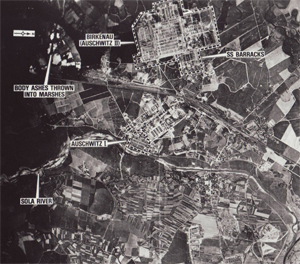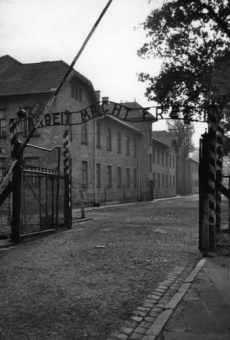Auschwitz I (Main Camp)

© National Archives, Washington, DC

© Stefanie Plappert
The SS built the first concentration camp on the outskirts of the Polish industrial town of Oświęcim (Auschwitz), later referred to as the main camp (Stammlager) or Auschwitz I, in May and June 1940. Located on the grounds of former Austrian military barracks dating from the nineteenth century, it was last used by the Polish army. Initially, most of those confined in the one-story stone buildings were Polish hostages, resistance fighters, and members of the Polish intelligentsia, who were scheduled to be killed—from the standpoint of the occupiers—in the interest of ensuring the ruling order. Later, people from all over Europe who were persecuted because of politics or race, as well as “asocials,” “preventive detainees,” “criminals,” and Jehovah’s Witnesses (Bibelforscher), were deported to Auschwitz.
In October 1941, more than 10,000 Soviet prisoners of war were deported from Wehrmacht POW camps to Auschwitz and housed in fenced-off blocks of Auschwitz I (Blocks 1–3, 12–14, 22–24) until March 1942. The SS used the members of the Red Army to build the Birkenau camp.
In March 1942, the camp SS set up a “women’s concentration camp” in Blocks 1 to 10 of the main camp. Most of the prisoners there were Jewish women from Slovakia.
By 1943 the number of inmates had grown to about 20,000 people, deployed at forced labor in the nearby SS-operated production facilities, agricultural activities, and experimental stations. In 1944, Auschwitz I (main camp) included a total of 28 two-story brick barracks.
The prisoners’ living conditions were inhumane in every respect, and the death rate was quite high. People died in huge numbers of typhus, dysentery, cholera, and abuse, and in arbitrary killings. In Block 10 of Auschwitz I (main camp), prisoners were victims of medical experiments on humans conducted by SS doctors. Block 11 served as the site for torture and punishment. Between those two blocks was the infamous “Black Wall,” an execution site where the SS shot thousands of prisoners.
In early September 1941, the camp management in the main camp first experimented with using the poison gas Zyklon B for mass extermination of human beings. The victims were 600 Soviet POWs and 250 sick inmates. A room called the “mortuary” (Leichenhalle), part of the crematorium (Crematorium I) that was built as early as August 1940, was converted to serve as the first makeshift gas chamber. Here the SS used Zyklon B to kill thousands of newly arrived Jews and several groups of Soviet POWs.
In 1945, the guard details forced 10,000 surviving male prisoners from the main camp to go on the death march, along with 6,000 female prisoners who had been housed near the main camp in the so-called preventive detention camp extension, in existence since October 1944. About 1,000 ill, weak prisoners were liberated in Auschwitz by the Red Army on January 27, 1945.
(FS; transl. KL)
















